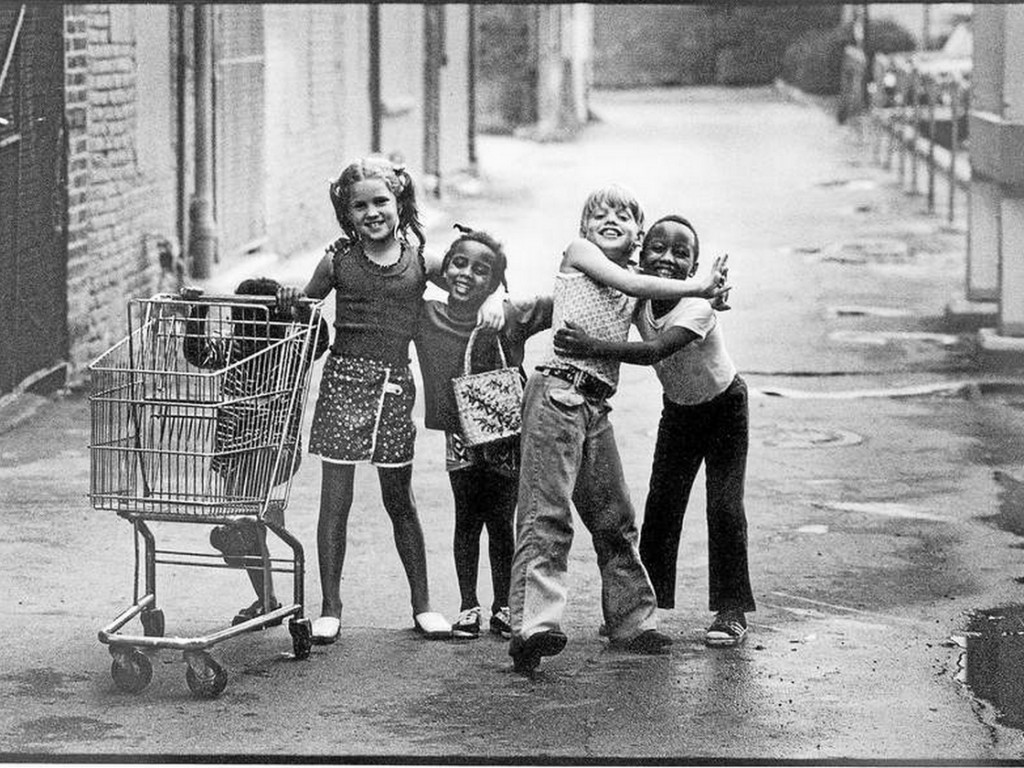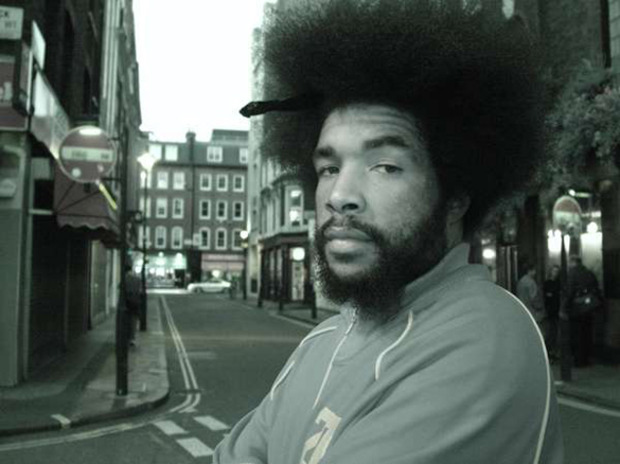Two viewpoints out of Trayvon Martin’s death

This 1973 photo by Joe Crachiola (The Macomb Daily) of five children playing in a Detroit suburb has gone viral on the Internet.
The shooting death of Trayvon Martin has become one of those unavoidable news stories — one which has drawn a number of inevitable lines in the sand between extreme viewpoints (as is typical with any controversial story in America). Of course, the over-riding lens on this discussion is race and the continuing divide that exists in many areas of US society (and let’s face it, across the world) in terms of color.
So much has been written and said about the unfortunate incident itself and the court case which ensued — we’re not going to rehash that here. What I would like to do is draw your attention to a couple of interesting stories that came out of the discussion. The first comes from NPR’s Code Switch blog and relates to the beautiful photo above:
In late July 1973, Joseph Crachiola was wandering the streets of Mount Clemens, Mich., a suburb of Detroit, with his camera. As a staff photographer for the Macomb Daily, he was expected to keep an eye out for good feature images — “those little slices of life that can stand on their own.” The slice of life he caught that day was a picture of five young friends in a rain-washed alley in downtown Mount Clemens. And what distinguishes it are its subjects: three black children, two white ones, giggling in each others’ arms. “It was just one of those evenings,” Crachiola remembers. “I saw these kids — they were just playing around. And I started shooting some pictures of them. At some point, they saw me and they all turned and looked at me and struck that pose that you see in the picture. It was totally spontaneous. I had nothing to do with the way they arranged themselves.”
This week, Crachiola, who now lives in New Orleans, posted the vintage photo on his Facebook page. “For me, it still stands as one of my most meaningful pictures,” he wrote in his post. “It makes me wonder… At what point do we begin to mistrust one another? When do we begin to judge one another based on gender or race? I have always wondered what happened to these children. I wonder if they are still friends.”
The reality is, mix-raced friendships, communities and marriages exist everywhere. However, they are more abundant in some places than others.
How do we stop the ghetto/warfare mentality that creates racial silos and mistrust? That is a question for those much smarter than me. But the innocent beauty in that photo shows that it is truly worth working for.
Speaking of which, the other thing that struck me about Crachiola’s story of taking that photo — as a keen amateur photographer myself — is the current climate in which we live which would make taking a similar photo of children be seen to be predatory in many circumstances. It is unfortunate, the level of mistrust which exists in our society, the product of the actions of a degenerate few.
This leads me onto the second viewpoint which I’ve come across in recent days. Once again, the keys to this anecdote involve mistrust and race as its key themes.
Ahmir “Questlove” Thompson is best known as the drummer for band the Roots. He has many other feathers in his cap in terms of the music industry, but more than this, he is not afraid to be outspoken on social issues. Questlove wrote for New York Magazine about how the Zimmerman verdict made him feel, as an intimidating looking black man living in a society that treats him differently, based on what he perceives to be appearance.
I’m in scenarios all the time in which primitive, exotic-looking me — six-foot-two, 300 pounds, uncivilized Afro, for starters — finds himself in places where people who look like me aren’t normally found. I mean, what can I do? I have to be somewhere on Earth, correct? In the beginning — let’s say 2002, when the gates of “Hey, Ahmir, would you like to come to [swanky elitist place]?” opened — I’d say “no,” mostly because it’s been hammered in my DNA to not “rock the boat,” which means not making “certain people” feel uncomfortable.
He cited a specific example of how he felt in his own apartment block, to illustrate the feeling.
I recently told a friend one of these stories: I live in a “nice” building. I work hard. You know I work hard. My logic is (naïve alert in 5, 4, 3, 2 … ) “Well, there can’t be any fear of any type in this building” — you’ve got to go through hell and high water just to get accepted to live here, like it’s Dartmouth or UPenn. Secondly, there are, like, five to eight guards on duty 24/7, so this spot is beyond safe. Like, Oscar winners and kids of royalty and sports guys and mafia goombahs live here. One night, I get in the elevator, and just as the door closes this beautiful woman gets on. Because of a pain in the arse card device you have to use to get to your floor, it just makes it an easier protocol for whoever is pressing floors to take everyone’s request, like when you are at the window of a drive-thru. So I press my floor number, and I ask her, “What floor, ma’am?” (Yes, I say “ma’am,” because … sigh, anyway.) She says nothing, stands in the corner. Mind you, I just discovered the Candy Crush app, so if anything, I’m the rude one because I’m more obsessed with winning this particular level than anything else. In my head I’m thinking, There’s no way I can be a threat to a woman this fine if I’m buried deep in this game — so surely she feels safe.
The humor comes in that I thought she was on my floor because she never acknowledged my floor request. (She was also bangin’, so inside I was like, “Dayuuuuuuuuuuum, she lives on my floor? *bow chicka wowow*!” Instantly I was on some “What dessert am I welcome-committee-ing her with?”) Anywho, the door opens, and I waited to let her off first because I am a gentleman. (Old me would’ve rushed first, thus not putting me in the position to have to follow her, God forbid if she, too, makes a left and it seems like I’m following her.) So door opens and I flirt, “Ladies first.” She says, “This is not my floor.” Then I assume she is missing her building card, so I pulled my card out to try to press her floor yet again. She says, “That’s okay.”
Then it hit me: “Oh God, she purposely held that information back.” The door closed. It was a “pie in the face” moment.
I laughed at it. Sort of.
Inside I cried.But if I cried at every insensitive act that goes on in the name of safety, I’d have to be committed to a psych ward.
Do large, intimidating white men get treated with the same level of fear sometimes? Sure. However, there is an important discussion here regarding the segregation of society which causes fear through ignorance.
There is also a discussion that needs to be had regarding the fear which is institutionalized by governments, such as that of the United States of America, in order to employ greater control over the lives of its citizens.
A perception of danger in society, perpetuated by government-induced fear, allows the government to justify the ways in which they monitor society. Currently, the governments of the world possess the greatest monitoring tool ever created — the Internet. And we all contribute data to that ever-growing tool (through things like Facebook), making their job even easier.
As such, there is no real incentive for governments to reduce the barriers that exist in society. No real incentive for successfully intermingling races. No real incentive to stop the next Trayvon Martin happening.
Feel free to share your thoughts in the comments.


